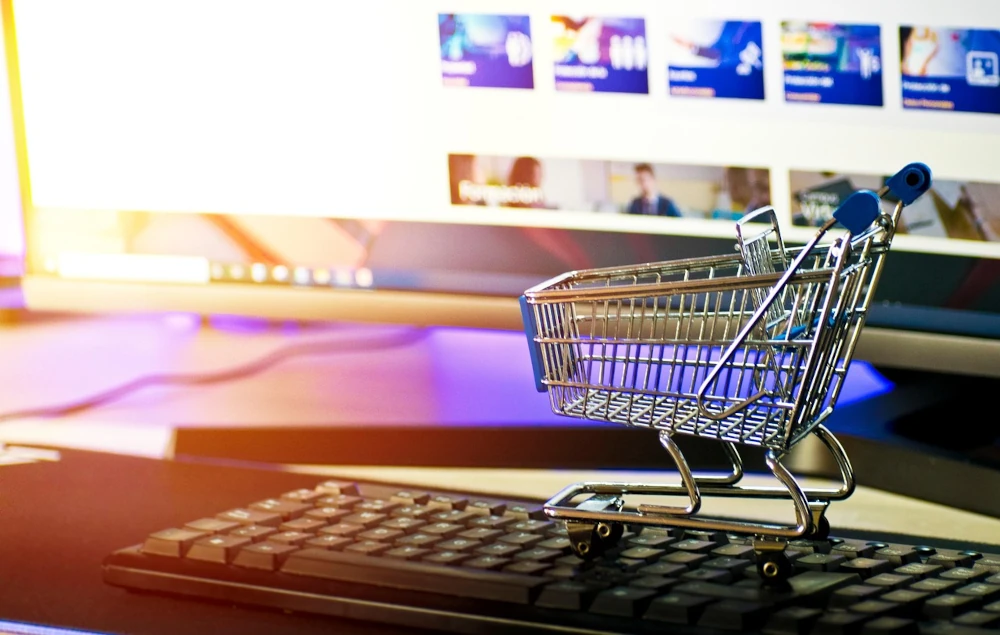
The digital marketing landscape continues to move rapidly, and already in 2025. Hyper-personalized engagement with audiences through AI, voice search optimization, zero-click content, and immersive experiences is reshaping how brands connect with their audiences. This report explores the most influential trends in digital marketing for 2025 with credibility context, expert navigation, and ideations for businesses of all sizes.
2025 will be the year of hyper-personalization, which meets privacy, AI content maturation, and immersive technology, which redefines engagement. Marketers have to prioritize value vs. volume while using smart automation, first-party data, and interactive opportunities that foster genuine connections. From voice SEO to social commerce, being able to track and manage these trends is not an option; it is imperative.
AI and Automation in Content Marketing: The 2025 Transformation
AI has been involved in digital marketing for a while, but as of 2025, it’s built in. Generative AI tools “GPT-4.5 and DALL·E” now support the end-to-end content pipeline: from ideation through copy development and into the visual assets and design of deployment.
Real-Life Use Cases:
- AI Tools produce entire ad campaigns only based on tone
- Automated product descriptions, email copy, and personalized email creation
- Visual generation for ad creatives through image models
Strategic Implication:
Brands must train internal teams to curate and edit AI output to ensure brand/image consistency — or consider outsourcing digital marketing tasks to virtual assistants for efficiency.
Hyper-Personalization with First-Party Data
Brands are pivoting away from 3rd party cookies and leaning into zero-party/first-party data to create custom experiences for users.
What's on the ground and working in 2025:
- Interactive quizzes collecting “intent” (user data)
- Dynamic landing pages based on user behavior
- Personalized video messages of your creatives based on CRM segments
Why is this important?
Personalization provides 6x more engagement and 4x more conversions than a generic campaign.
Voice Search Optimization and Conversational SEO
Voice search and voice commerce are going to be part of everyday life in 2025, thanks to wearables and smart homes.
Optimizing for Voice:
- Utilize long-tail, conversational keywords in your content
- Structure your answers clearly and in shorter, scannable formats.
- Utilize and integrate FAQ schemas to improve your chances of landing a voice result.
Example:
Rather than targeting “best shoes 2025,” target “What shoes are best for long walks in hot weather?”
Conversational Marketing & Chatbots 2.0
Gone are the days of static chatbots. Now, AI-enhanced and NLP-driven chatbots can provide real-time service to customers, optimize sales, and support and nurture leads.
Trends in 2025:
- WhatsApp and Messenger bots are driving instant checkout
- Chat interfaces recommending content, products, and services
- Integrations with voice assistants such as Siri and Alexa
Social Commerce is the New e-commerce

In 2025, users can shop directly through apps like Instagram, TikTok, and Pinterest without leaving the app at all.
Platform-Specific Updates:
- TikTok Shops are adopting shoppable videos that have live demo overlays
- Pinterest’s visual search now integrates product tagging.
- YouTube has entered live-stream selling in collaboration with creators/influencers.
Strategy Tip
You can think of each platform as a sales funnel. Think of ways to optimize each visual, caption, and call to action through effective social media marketing strategies tailored to each channel.
Zero-Click Content is Reigning Supreme in Search
Users don’t have to click to get answers. Featured snippets, rich results, and AI-generated snippets from Google supply instant information.
What Marketers Should Do:
- Utilize structured data and schema markup
- Write blog content that gives simple, short answers
- Optimize headings and use bullets to capture snippets
Value Insight:
Being in the ranking position isn’t enough anymore—you need visibility inside SERPs, even if you don’t receive a click.
Short-form & Vertical Video is the Dominant Feature
Engagement continued on TikTok, Instagram Reels, and YouTube Shorts. By 2025, vertical video will be in almost every email campaign and landing page, and even used for B2B content.
Video Trends:
- Short micro educational videos (under a minute)
- “Face-to-camera” authenticity is used instead of editing in high-production
- CTAs embedded directly into videos using AI-prompted tools, combined with smart hashtag strategies, amplify discoverability and engagement across platforms.
Use Case:
B2B SaaS brands may embed short-form explainers into LinkedIn posts as added content to product onboarding.
Performance Creative Outperforms Traditional Campaigns
Winning ad strategies in 2025 are the ones that use data and replicate creativity in real-time.
What's Included:
- Dynamic ads per audience segment
- A/B testing of video hooks in the same ad set
- Real-time attention heatmaps that create a visual hierarchy
Tools to Explore:
- Pencil AI (for predictive creative)
- Motion (for understanding ad analytics)
Privacy-First Marketing
With heightened privacy concerns related to digital tracking, marketers in 2025 will need to focus on leading with consent and transparency.
How This Looks Like:
- Cookie-less tracking to understand visitors’ behavior (contextual targeting)
- Privacy-centric email onboarding (know how their data will be used)
- Clearly defined opt-out flows in addition to preference centers.
Omnichannel Experiences with CX (Customer Experience) as the Main Brand
Today’s consumers expect a seamless experience across devices and platforms, from an app to a physical store.
Things You Can Leverage:
- Unified customer journey mapping software
- QR codes that activate offline promotions in a digital world
- Interactive email journeys paired with SMS and push notifications as similar experience drivers
Main Takeaway:
Your user does not see “channels.” They only see your brand. Make it a consistent experience across all media.
Influencer Marketing is Now Data-Driven and Niche-Focused
In 2025, brands will be working with micro and nano influencers instead of celebrities because it drives engagement versus reach.
Notable Trends:
- Performance metrics incorporated in influencer contracts (CPC, CPA)
- Community-focused or niche (BookTok, Fitstagram) influencers rather than celebrities/mass appeal.
- AI-based influencer vetting tools that use ALL of the data available to them.
AR/VR and Immersive Marketing
Augmented reality is allowing brands to offer try-before-you-buy experiences across every type of product, ranging from fashion to furniture.
Examples:
- Virtual showrooms via WebAR
- AR filters on social (for on-the-go product sampling)
- VR trade show booths and remote demos
Content Hubs > Standalone Blog Posts
In 2025, SEO content will be reliant on topical authority. Many brands now are not making single standalone blog posts but are making connected content hubs.
Strategic Shift
- Pillar page + clusters model
- Internal linking at scale
- Embedding multimedia assets by topic (video, carousel, infographic)
Conclusion
The landscape of digital marketing in 2025 is about relevance, speed, and user control. Brands adopting smart technology without sacrificing human creativity will be the winners. Whether it’s AI-driven storytelling, privacy-first personalization, or branded vertical video strategies, this is a pivotal year that demands intentionality. Marketers who are willing to walk the walk, test, iterate, and embrace authenticity with value will not only survive but thrive.
FAQs
Is SEO still relevant in 2025?
Yes, but it’s changing: structured data, content hubs, and AI optimization are more important.
Should I continue investing in email marketing?
Absolutely, especially around personalized, behavior-triggered email journeys.
Are AI systems replacing digital marketers?
Absolutely no, it’s taking the place of repetitive tasks, leaving time for strategic thinking and storytelling.
What's the most powerful trend for digital marketers in 2025?
Personalization by first-party data and AI-led automation is one of those.
How can small businesses transform according to these changes?
Look at automation tools and simple personalization, and focus on being omnichannel consistent vs. costly production.
